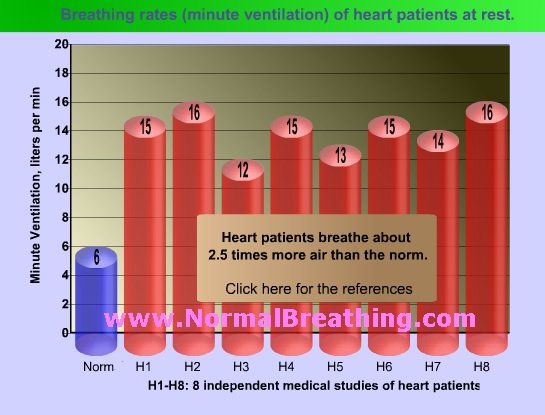- Updated on October 29, 2020
![]() By Dr. Artour Rakhimov, Alternative Health Educator and Author
By Dr. Artour Rakhimov, Alternative Health Educator and Author
- Medically Reviewed by Naziliya Rakhimova, MD
 Heart disease (or cardiovascular disease) is a common medical term for a variety of diseases that affect the heart. Official medicine claims that there are no known causes and no successful treatments for heart disease. Currently, up to about one-quarter of people die due to heart disease in leading Western countries. It is the main cause of mortality in the USA, Canada, the UK and many other countries.
Heart disease (or cardiovascular disease) is a common medical term for a variety of diseases that affect the heart. Official medicine claims that there are no known causes and no successful treatments for heart disease. Currently, up to about one-quarter of people die due to heart disease in leading Western countries. It is the main cause of mortality in the USA, Canada, the UK and many other countries.
Coronary heart disease is the main type of heart disease. It is a disorder of the blood vessels of the heart that can lead to a heart attack. A heart attack happens when an artery becomes too constricted (due to vasoconstriction) or blocked, preventing blood, oxygen and nutrient supply to the cells of the heart muscle. Heart disease is only one of several other cardiovascular diseases, such as stroke, angina (chest pain), hypertension (high blood pressure), and rheumatic heart disease.
What causes cardiovascular diseases?
The cause of heart disease is simple. Consider this graph and table.
If you click on the image, you can see a web page with a table that includes exact details and medical studies that discovered heavy breathing in people with cardiovascular disease.
These studies prove that people with heart disease breathe much more air at rest than the medical norms. As a result, they have too low levels of CO2 in the lungs and arterial blood. CO2 is the most potent known dilator of blood vessels. Therefore, people with heart disease have reduced blood and oxygen supply to their heart muscles due to their heavy breathing (chronic hyperventilation).
How to treat cardiovascular diseases naturally: the experience of over 180 MDs
Western official medicine wrongly claims that heart disease is impossible to treat and reverse.
Video: Stop Heart Attack, Prevent Cardiovascular Disease. Based on the clinical experience and medical statistical data of over 180 Russian medical doctors, we can positively assert that chronic heart disease can be reversed. This is possible since it is based on an ineffective breathing pattern (over-breathing or hyperventilation), which decreases heart oxygenation
How can hyperventilation affect the heart muscle and cardiovascular system?
Many effects resulting from a CO2 deficiency can influence cardiovascular disease.
 * Low blood CO2 values lead to the narrowing of small blood vessels (arteries and arterioles) in the whole body (see Webpage: CO2 effects – Vasodilation; all links are below). This causes two problems. First, blood flow to the heart muscle decreases (Okazaki et al, 1991). Hence, the heart tissue gets less oxygen, glucose and other nutrients. Second, since small blood vessels are the main contributors to the total resistance in relation to blood flow, CO2 deficiency increases resistance to blood flow and makes the work of the heart more difficult leading to an increased heart rate or pulse.
* Low blood CO2 values lead to the narrowing of small blood vessels (arteries and arterioles) in the whole body (see Webpage: CO2 effects – Vasodilation; all links are below). This causes two problems. First, blood flow to the heart muscle decreases (Okazaki et al, 1991). Hence, the heart tissue gets less oxygen, glucose and other nutrients. Second, since small blood vessels are the main contributors to the total resistance in relation to blood flow, CO2 deficiency increases resistance to blood flow and makes the work of the heart more difficult leading to an increased heart rate or pulse.
* The suppressed Bohr effect, due to low CO2 values in the arterial blood, also reduces oxygenation of the heart muscle (Webpage: CO2 effects – The Bohr effect). This increases anaerobic metabolism and produces excessive amounts of lactic acid producing more stress on the heart. Note that lactic acid is often implicated as a source of pain in any tissue. In the case of the heart, a person can suffer from angina or chest pain.
* These 2 effects reduce oxygen levels in the brain, heart and all other vital organs. Angina pain is caused by one factor: low oxygenation of the heart tissue.
* The excited nerve cells in the heart (the cells that are called pacemakers) interfere with the normal synchronization and harmony in the working of the heart muscle (see Webpage: CO2 effects – Stabilization of the nervous system). Indeed, the heart valves should open and close in proper time, much like a well-tuned engine. Desynchronization can make the whole process of blood pumping less efficient or more energy- and oxygen-demanding.
More cardiovascular disease factors discovered by Russian Buteyko doctors
 * Dr. Buteyko and other Buteyko breathing medical doctors conducted medical studies devoted to heart disease and cholesterol levels. Hyperventilation causes abnormal metabolism of fats. This leads to increased blood cholesterol level in predisposed people. That condition gradually, over periods of weeks or months, produces cholesterol deposits on the walls of blood vessels in genetically predisposed people. Such deposits can induce primary hypertension. As Russian published studies suggest, the CP has a linear correlation with the blood cholesterol level.
* Dr. Buteyko and other Buteyko breathing medical doctors conducted medical studies devoted to heart disease and cholesterol levels. Hyperventilation causes abnormal metabolism of fats. This leads to increased blood cholesterol level in predisposed people. That condition gradually, over periods of weeks or months, produces cholesterol deposits on the walls of blood vessels in genetically predisposed people. Such deposits can induce primary hypertension. As Russian published studies suggest, the CP has a linear correlation with the blood cholesterol level.
* Chronic hyperventilation affects the normal work of essential fatty acids causing changes in inflammatory responses and the malfunctioning of the immune system.
* Mouth breathing (both at rest and during exercise) is an additional adverse stimulus. It prevents the normal absorption of nitric oxide (a hormone and powerful dilator of blood vessels) synthesized in the nasal passages.
The father of cardiorespiratory physiology, Yale University Professor Yandell Henderson (1873-1944), investigated some of these effects about a century ago. Among his numerous physiological studies, he performed experiments with anesthetized dogs on mechanical ventilation. The results were described in his publication Acapnia and shock. – I. Carbon dioxide as a factor in the regulation of the heart rate. In this article, published in 1908 in the American Journal of Physiology, he wrote, “… we were enabled to regulate the heart to any desired rate from 40 or fewer up to 200 or more beats per minute. The method was very simple. It depended on the manipulation of the hand bellows with which artificial respiration was administered… As the pulmonary ventilation increased or diminished, the heart rate was correspondingly accelerated or retarded” (p.127, Henderson, 1908).
* Since heart patients breathe 2-3 times more than the official norm, they usually have chest breathing, which reduces blood oxygenation. These irregularities indicate abnormal states of the autonomous nervous and musculoskeletal systems.
How could these factors lead to different forms of cardiovascular disease?
 The whole picture depends on genetic predisposition and environmental factors. There are so many negative factors created by hyperventilation. They can affect the normal work of any part of the cardiovascular system. People are different. Some may get chronic heart failure, others high blood pressure, or stroke, atrial fibrillation, or various other abnormalities in the heart muscle.
The whole picture depends on genetic predisposition and environmental factors. There are so many negative factors created by hyperventilation. They can affect the normal work of any part of the cardiovascular system. People are different. Some may get chronic heart failure, others high blood pressure, or stroke, atrial fibrillation, or various other abnormalities in the heart muscle.
Do you know that it is possible to get an abnormal ECG tracing from a healthy heart just by voluntary heavy breathing? Later, many cardiac professionals, while analyzing such ECGs, can claim pathological changes in the heart causing cardiovascular disease. These changes are different for different people. Vice versa, normal breathing naturally eliminates various, already detected, ECG abnormalities.
How more than 180 Russian Buteyko MDs reverse cardiovascular disease
 Modern medicine and physiology have a very limited understanding of what is going on with the cardiovascular system when breathing and CO2 values gradually change in one direction or another. There are many questions related to individual variability, mechanisms of developing pathologies, the interaction of hereditary and environmental factors.
Modern medicine and physiology have a very limited understanding of what is going on with the cardiovascular system when breathing and CO2 values gradually change in one direction or another. There are many questions related to individual variability, mechanisms of developing pathologies, the interaction of hereditary and environmental factors.
However, Russian and Soviet Buteyko medical professionals found that patients with heart disease need to slow down their automatic breathing: breathe less and less, day after day. This increases body oxygen levels. Patients with less than 10 seconds for the body-oxygen test have severe forms of the heart disease. About 15 seconds corresponds to moderate heart problems and 20 s to light forms of cardiovascular disease. Over 40 seconds for the body-oxygen test prevents or quickly reverses any heart problems, even abnormalities in the heart muscle tissue. The simple DIY body-oxygen test is a very sensitive parameter of the degree of heart disease.
Note that many heart patients, when they have less than 20 seconds for the body-oxygen test, cannot practice breathing exercises that include breath holds. They can find more information about Restrictions, limits, and temporary contraindications for heart disease during the early stages of breathing retraining.
References
Henderson Y, Acapnia and shock. Carbon dioxide as a factor in the regulation of the heart rate, American Journal of Physiology 1908, 21: p. 126-156.
Okazaki K, Hashimoto K, Okutsu Y, Okumura F, Effect of arterial carbon dioxide tension on regional myocardial tissue oxygen tension in the dog [Article in Japanese], Masui 1991 Nov; 40(11): p. 1620-1624.
Symptoms & Types of Heart Diseases (From WebMD.com)


